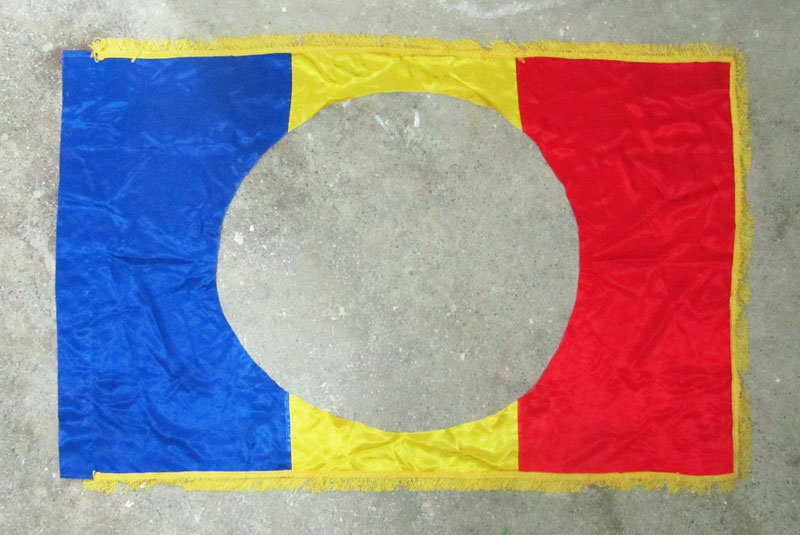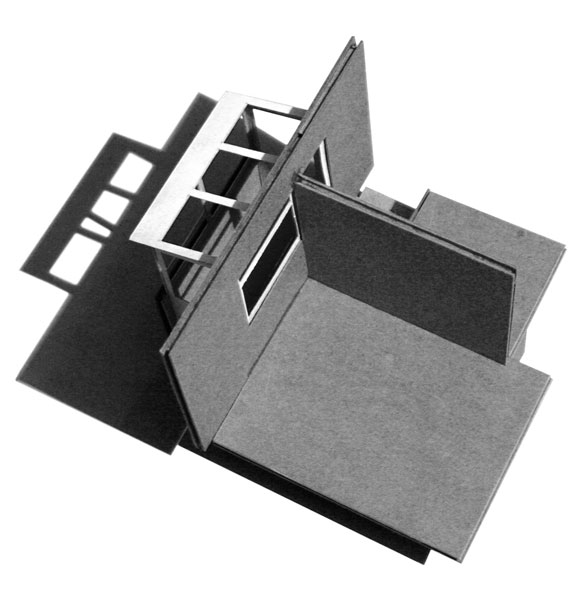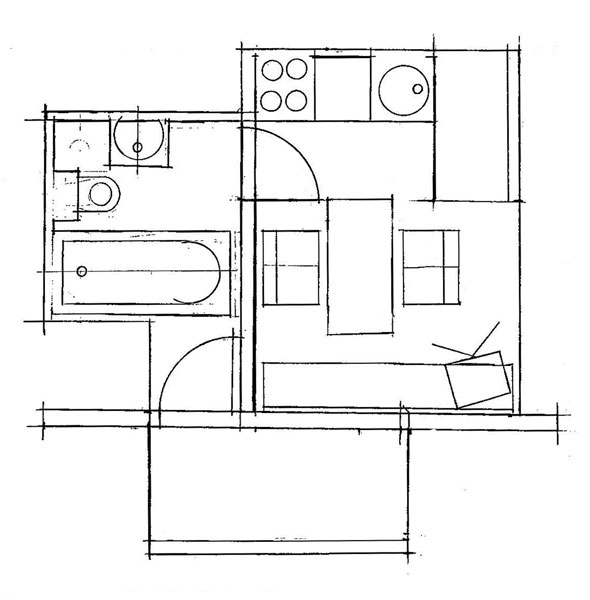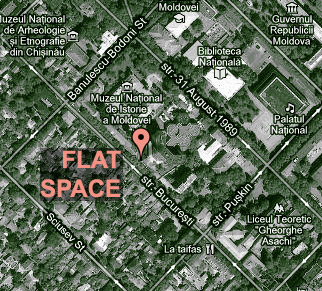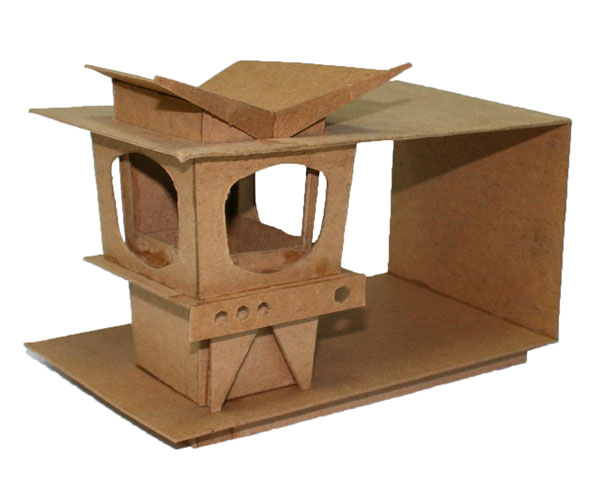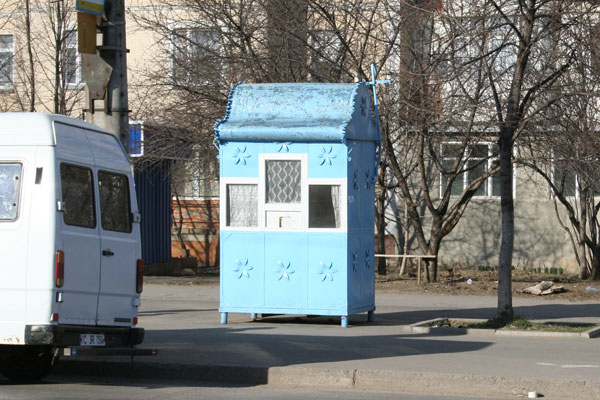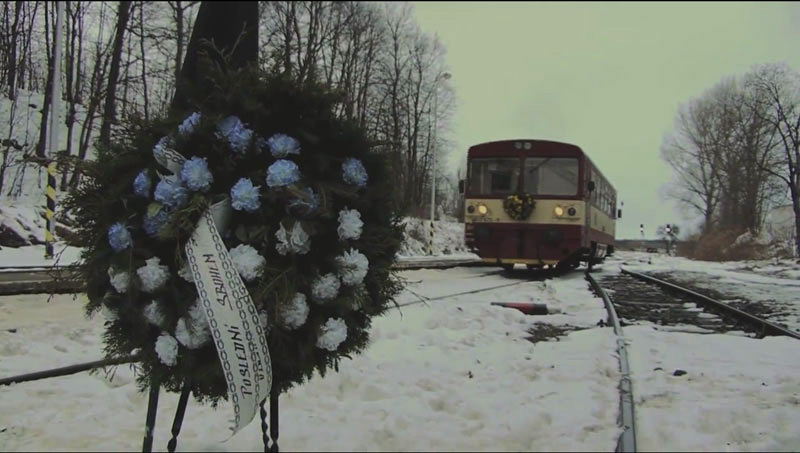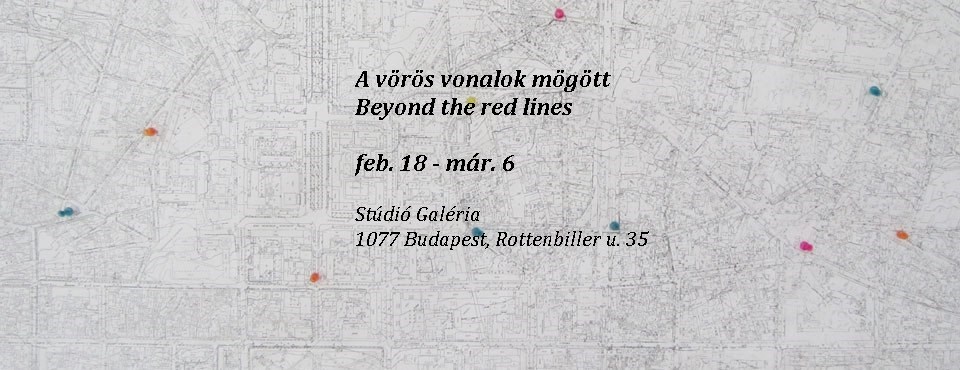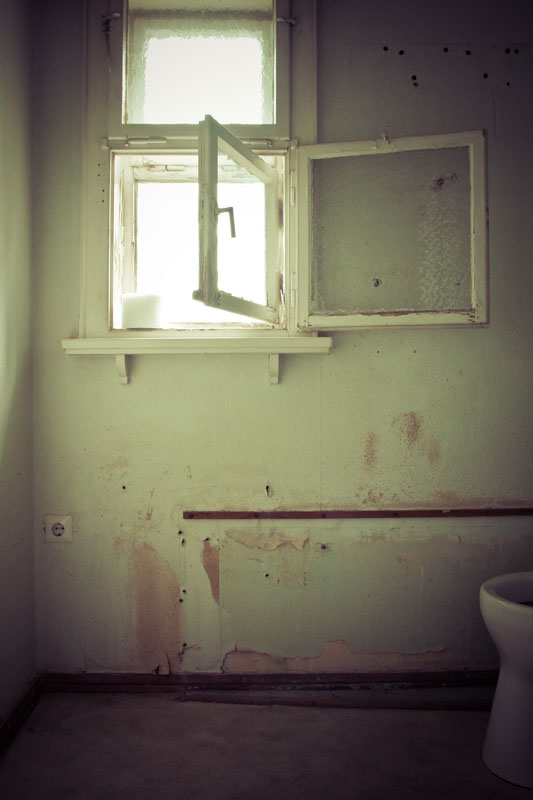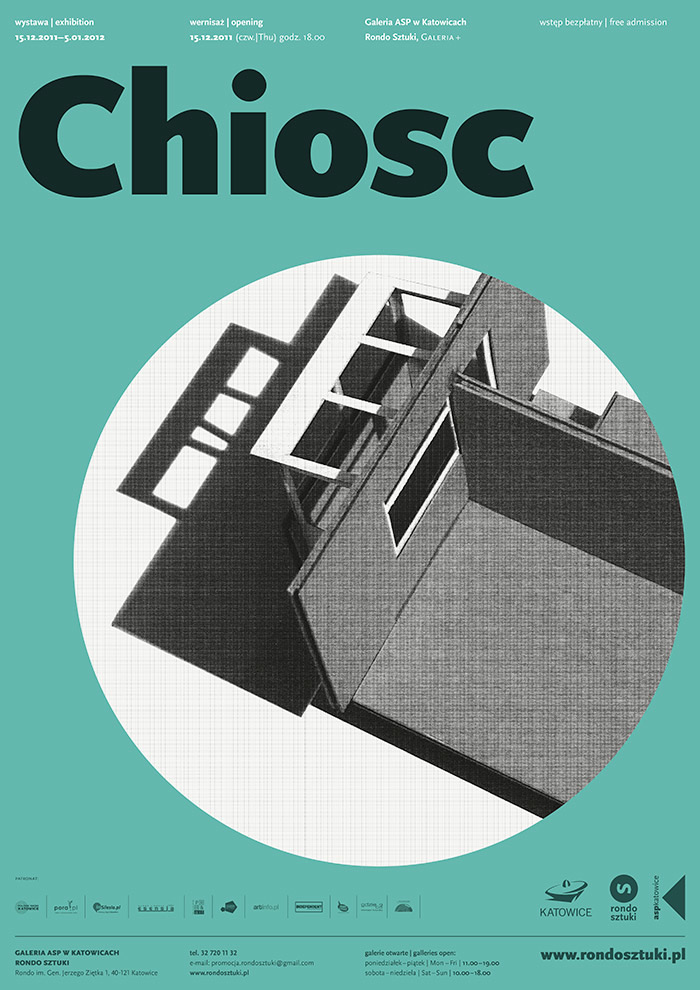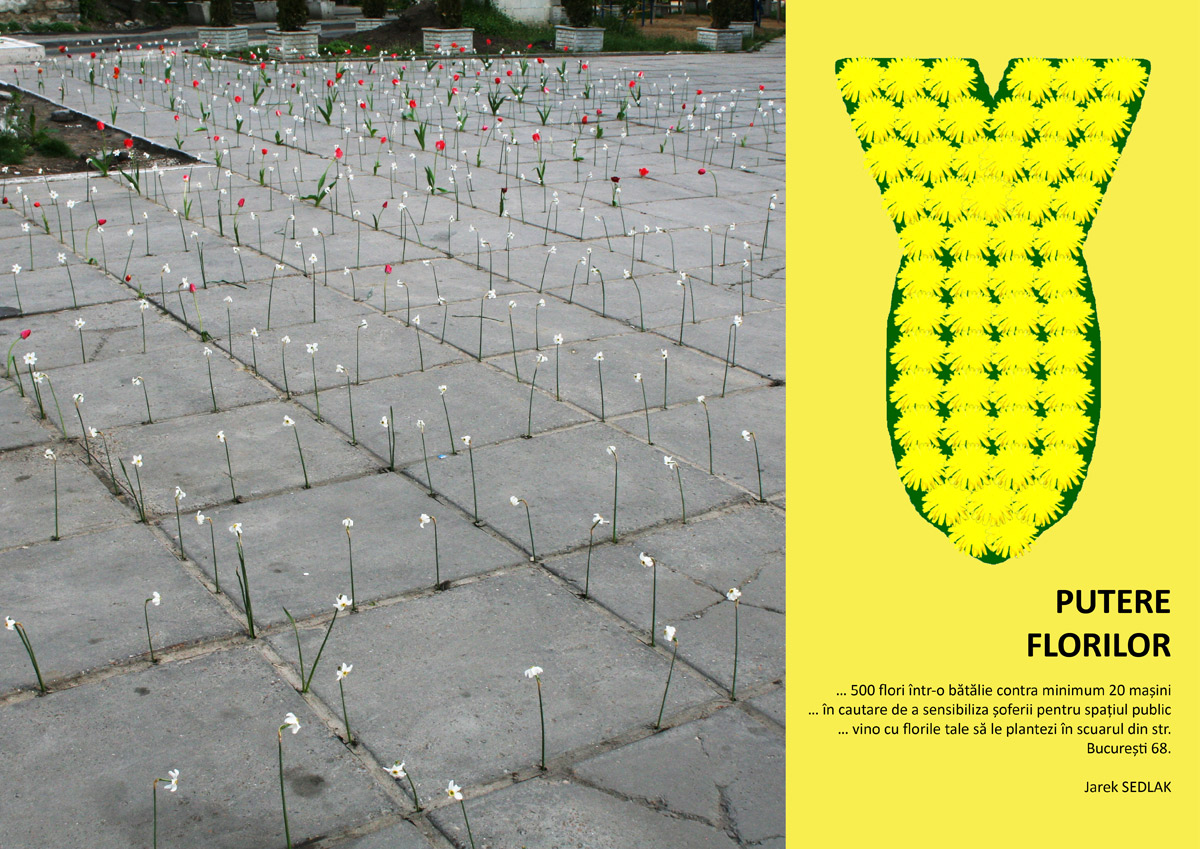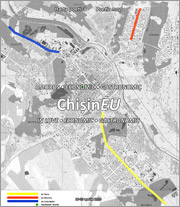GLOBAL HOUSE – program de proiecții video / screening program, 27, 28 octombrie 2011, ora 18-20:00
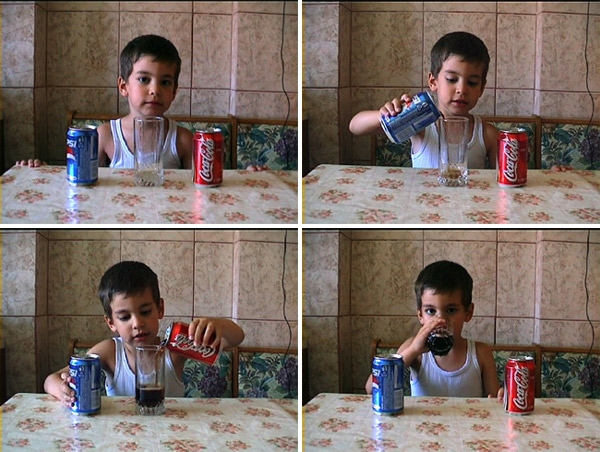
Ciprian Mureșan, Alegere…., 2005
APARTAMENT DESCHIS / FLAT SPACE
27-28 octombrie 2011, ora 18:00-20:00
str. Bucuresti 68/1, Chisinau
- – – scroll down for English – – -
RO
– – – – -
GLOBAL HOUSE PROGRAM de PROIECȚII VIDEO
Curated by the 3rd Gwangju Biennale International Curator Course
globalhousevideos.tumblr.com
Oferind o perspectiva asupra diversitatii de abordari ale societatii contemporane din punct de vedere artistic dar si asupra productiei artistice, GLOBAL HOUSE prezinta lucrari video ale tinerilor artisti, stabiliti in toata lumea. Prima oara GLOBAL HOUSE a fost prezentat la Kunsthalle Gwangju in August 2011 si curatoriat de participantii la programul international pentru curatori al celei de-a 3-a Bienale din Gwangju.
Artisti: Ivan Argote (Columbia), Stuart Bailey (Australia), Aline Bouvy and John Gillis (Luxemburg si Belgia), Anna Byskov (Franța), Eduardo Chachucho (Arica de Sud), Chen Chenchen (China), Hugo Hopping (SUA), Ise Parking Project (Malaezia), Joan Jonas (SUA), Shigeyuki Kihara (Noua Zeelanda), Lilly McElroy (SUA), Naeem Mohamien (Banglades), Ciprian Muresan (Romania), Katrina Neiburga (Letonia), Kurt Ralske (SUA), Sebastian Stumpf (Germania), Abdullah M. I. Syed (Pakistan), Edward Thomasson (Marea Britanie), Diego Tonus (Italia), Xu Wang (China), Zeeshan Younis (Pakistan).
Curatorii participanti la programul international pentru curatori al celei de-a 3-a Bienale din Gwangju: Hamja Ahsan, Rodolfo Andaur, Devrim Bayar, Fabienne Bideaud, Caroline Dumalin, Johanna Ferrer Gukdager, Rosemary Forde, Susanne Husse, Tianyue Jiang, Sumbul Khan, Leila Khastoo, Snejana Krasteva, Stephen Matijcio, Ute Meta Bauer, Vera Arunee Mey, Maya Mikelsone, Yujin Min, Isabelle Le Normand, Pietro Rigolo, Anca Rujoiu, Nana Seo, Eun A, Boliang Shen, Stephanie Sykes, Guy Tangros, Jeonsung Yang
LUCRARILE VIDEO
Ivan Argote (Colombia)
Retusarea, 2008 (00:12)
Courtesy de l’artiste & Galerie Perrotin, Paris
Artistului vizual Ivan Argote nascut in Columbia este cunoscut pentru lucrarile sare artistice care manifesta un caracter rebel fata de arta traditionala. In această surprinzatoare lucrare cu titlul ,,Retusarea“ Argote se autofilmează în timpul colorarii cu spray a 2 picturi ale faimosului pictor olandez Piet Mondarian.
Stuart Bailey (Australia)
Gura desertului, 2008 (00:59)
Artistul australian, Stuart Bailey, exploreaza dezangajarea culturala si uitarea intentionata. In ,,Gura desertului,, pesonajul principal rataceste fara vreun scop, pierdut si expus conditiilor aspre ale desertului.
Aline Bouvy and John Gillis (Luxembourg & Belgia)
Venusia, 2007 (7:00)
Coloana sonora originala a fost compusa si realizata de Johnston Sheard
,,Venusia,, este o viziune a viitorului post-tehnologic. Intunecata si haotica, lucrarea este influentata de un fotograf si stilist francez din anii 60, Serge Lutens, si este in intregime realizata dintr-un colaj animat, din revistele de moda. Parti ale corpului modelelor sunt folosite pentru a reprezenta alte corpuri si alte obiecte neclare, imaginand co-existenta ritualului pagan si a hiper-elegantei, in acest video macabru. Abordind concepte precum frumosul, sexul si moartea, lucrarea ofera o viziune mistica asupra vietii si desicarii.
Anna Byskov (Franta)
BUMP, 2009 (4:55)
Adanc in padure, un personaj purtind o casca de hochei, se arunca in trunchiuri de copac. Linistea padurii, calmul muzicii, apatia imaginilor sunt confruntate cu violenta si brutalitatea actiunii, creand o dihotomie intre liniste si suicid. «Principiul nr. 27: Grabeste-te si fii categoric: Nicodata nu te indoi. Grabeste-te spre toate panourile cu capul in jos, fara ragaz, fara retragere.» (Dominique Noguez, Cum sa-ti esuezi viata in 11 lectii).
Eduardo Cachucho (Africa de Sud)
Saga 631, compozitor Angie Mullins, 2009 (7:05)
Acest video a fost realizat ca acompaniament vizual pentru muzica compusa de Angie Mullins, astfel combinat lucrarea serveste drept un raspuns artistic, ireal la mediul si peisajul urban din Johannesburg.
Chen Chenchen 陳陳陳 (China)
PE DRUM, 2010 (3:10)
Soft-ul MIDI a prezentat procesul de compunere a muzicii. Acest video serveste drept o partitura eletronica, precum si un tablou de parcurgere. Fiecare pixel corespunde unei parti din informatia sonora.
Hugo Hopping (SUA)
Întotdeauna mi-am dorit, 2011 (3:18)
Textul de pe ecran: “Intotdeauna mi-am dorit sa fac cea mai buna fotografie a apusului vestic – pe lânga toate, evitand politizarea imaginii – si sa cant un hit de-a lui Elvis din cheie (unul mai putin obisnuit pentru toti), astfel intampinind sfarsitul categorisirii in arta contemporana”.
Ise Parkingproject /a.k.a Roslisham Ismail (Malaezia)
Superfictiune, 2008 (4:39)
Ise, un artist vizual stabilit in Kuala Lumpur, in acest video, a creat o imagine ireala si fantastica a orasului. Zgaraie-nori, multimi, monstri, Ultraman, jetul luptator, etc. Un tip de imagine, pe care o putem intilni in anii 80, in filmele japoneze cu super eroi.
Joan Jonas (SUA)
Cantec intarziat, 1973 (19:38)
Joan Jonas este un pioner al artei video si performnce-ului. Experimențele sale si producția de la sfarsitul anilor 60 si inceputul anilor 70 au fost de baza in formularea genului de arta bazata pe timp. Jonas este profesor emerit a ACT la MIT.
“Cantec intarziat” este un video bazat pe performace-ul lui Jonas Intirziere, prezentat pentru prima data in Manhattan in 1972. Imaginile au fost filmate de pe acoperisul unei construtii. De acolo, spectatorii puteau urmari performance-ul petrecindu-se in spatiile goale de jos pe fundalul docurilor din departare, din West Side-ul de jos.
Shigeyuki Kihara (Noua Zeelanda)
Taualuga – ultimul dans, 2009 (5:52)
Shigeyuki Kihara este un artist cu radacini japoneze si Samoaneze, iar in prezent profeseaza la Auckland, Noua Zeelanda. In acest film, ea prezinta un dans traditional funeral in straie Victoriene.
Lilly McElroy (SUA)
Patratul (dupa Roberto Lopardo), 2003 (30:00) – Fragment (5:00)
“Patratul” prezinta artista desenind un patrat, cu creta, pe o strada oarecare, si incercind sa impiedice intr-un mod silentios trecatorii sa intre in spatiul marcat. Intr-un mod similar ca si McElroy care la intamplare, dar agresiv, pretinde la acest teren “partajat”, performanta sa, provoaca intrebari abstracte despre tertoriu, colonialism si locuinta.
Naeem Mohaiemen (Banglades)
Ingerul alb, 2011 (8:22)
Este Lotte Palfi Andor care striga. Trei decenii mai devreme ea a fost în Casablanca ca si femeia care a vindut diamantele sale pentru a scapa de Nazisti. In viata reala, ea a fugit din Germania in 1934, inainte de Kristallnacht. La varsta sa inaintata, Lotte a divortat de sotul ei cand el a dorit sa moara in Germania. Mai bine sa ramina singura, decat sa se reintoarca.
Ciprian Muresan (Romania)
Alegere…., 2005, (0:45)
“Alegere…” are o atitudine umoristica despre cultura consumatorului si iluzia de alegere in Romania post-comunista.
Katrina Neiburga (Letonia)
Trafic, 2003, (18:00)
Dupa nasterea fiului sau, artista, Katrina Neiburga, a decis sa lucreze ca sofer de taxi, cu scopul de a intalni diferiti oameni. O parte din film a fost realizata cu o camera de supraveghere instalata intr-o “Volga”, o masina sovietica, pe care, Karina, a condus-o timp de 3 saptamini, si, de asemenea, include experiența unor femei sofer de taxi.
Kurt Ralske (SUA)
Cele mai lungi 5 filmari ale „Istoriilor din Tokio“ (1953, Ozu), 2011 (01:42)
O analiza computerizata a capodoperelor cinematografului japonez. Cele mai lungi 5 filmari, un filmul complet de 136 min., poate fi vazut intr-o vizualizare alternativa.
Sebastian Stumpf (Germania)
Garajele subterane, 2008 (Avanpremiera 8:30)
In performance-urile sale video si seriile foto Sebastian Stumpf pune in discutie scenarii urbane discrete, cu acțiuni non-conformiste.
Abdullah M. I. Syed (Pakistan)
Golurile subconstientului, 2004 (5:23)
„Golurile subconstientului“ analizeaza schimbul reciproc al formei si golului, prin orificiile corpului. In acest sens, el reaminteste legatura dintre ritualele nasterii si mortii, notiunea de evident si subconstient, placere si durere.
Edward Thomasson (Marea Britanie)
Atingand, 2010 (12:22)
„Atingand“ exploreaza schimbul empatic dintre performace si viata de zi cu zi. Trei situatii se aduna impreuna in secvente serpuitoare ce provoaca tensiuni intre interactiunile publicului si limitele ambelor empatii: personale si sociale.
Diego Tonus (Italia)
Ora lupului, 2010 (14:00)
„Ora lupului este un film ce dezvaluie culisele proiectului „Colectionarii“ – curatori Michael Elmgreen & Ingar Dragset, expus la cea de-a 53-a Bienala Internationala de Arta de la Venetia în pavilioanele Daneze si Nordic. Filmul arata demontarea si demolarea lucrarilor expozitiei, fictiunea scenografiei si sfarsitul iluziei produse de toate acele obiecte adunate la un loc, sugerand o viziune diferita asupra lor.“ (Diego Tonus).
Xu Wang (China)
Lumea din afara (Wai Mian de Shi Jie), 2010 (12:47)
Artistul alege 3 momente extraordinare din viata omeneasca si deschide o fereastra pentru noi, ca sa observam psihologia de „inauntru/infara“, ce accentuiaza viata de zi cu zi.
Zeeshan Younis (Pakistan)
PT, 2010 (1:00)
PT proiecteaza imagini de pe copertile ziarelor, suprasaturate, de stiri din Pakistan, imitant un exercitiu militar si un video de instruire.
multumiri speciale pentru Maya Mikelsone

Lilly McElroy, Patratul (după Roberto Lopardo), 2003 (30:00) – fragment (5:00)
EN
– – – – -
GLOBAL HOUSE VIDEO SCREENINGS
Curated by the 3rd Gwangju Biennale International Curator Course
globalhousevideos.tumblr.com
Giving insights into various artistic approaches to contemporary societies and art production itself, GLOBAL HOUSE presents video works by young and established artists from across the world. GLOBAL HOUSE was first shown at Kunsthalle Gwangju in August 2011 and curated by the participating curators of the 3rd edition of the Gwangju Biennale International Curator Course.
Artists: Ivan Argote (Colombia), Stuart Bailey (Australia), Aline Bouvy and John Gillis (Luxembourg & Belgium), Anna Byskov (France), Eduardo Chachucho (South Afrika), Chen Chenchen (China), Hugo Hopping (USA), Ise Parking Project (Malaysia), Joan Jonas (USA), Shigeyuki Kihara (New Zealand), Lilly McElroy (USA), Naeem Mohamien (Bangladesh), Ciprian Muresan (Romania), Katrina Neiburga (Latvia), Kurt Ralske (USA), Sebastian Stumpf (Germany), Abdullah M. I. Syed (Pakistan), Edward Thomasson (UK), Diego Tonus (Italy), Xu Wang (China), Zeeshan Younis (Pakistan)
Curators of 3rd Gwangju Biennale International Curator Course: Hamja Ahsan, Rodolfo Andaur, Devrim Bayar, Fabienne Bideaud, Caroline Dumalin, Johanna Ferrer Gukdager, Rosemary Forde, Susanne Husse, Tianyue Jiang, Sumbul Khan, Leila Khastoo, Snejana Krasteva, Stephen Matijcio, Ute Meta Bauer, Vera Arunee Mey, Maya Mikelsone, Yujin Min, Isabelle Le Normand, Pietro Rigolo, Anca Rujoiu, Nana Seo Eun A, Boliang Shen, Stephanie Sykes, Guy Tangros, Jeonsung Yang
VIDEOS
Ivan Argote (Colombia)
Retouche, 2008 (00:12)
Courtesy de l’artiste & Galerie Perrotin, Paris
Colombia-born visual artist Ivan Argote is known for creating artworks that convey a rebellious attitude toward traditional art. In this surprising piece, titled Retouch,’ Argote films himself with a video camera and proceeds to spray-paint over top of two paintings by the famed Dutch painter Piet Mondrian.
Stuart Bailey (Australia)
Desert Mouth, 2008 (00:59)
Australian artist Stuart Bailely explores cultural disengagement and willful forgetfulness. In Desert Mouth the central figure wanders aimlessly, lost and exposed in the harsh environment of the desert.
Aline Bouvy and John Gillis (Luxembourg & Belgium)
Venusia, 2007 (7:00)
Original soundtrack written and performed by Johnston Sheard
Venusia is a vision of a post-technological future. Dark and chaotic, the work is influenced by 60s French photographer and stylist Serge Lutens, and is entirely made out of an animated collage of fashion magazines. Parts of the bodies of models are used to represent corpses and other more ambiguous lumps, envisioning the co-existence of pagan ritual and hyper-elegance, in this celebrational yet macabre video. Dealing with concepts of beauty, sex and death, the work is a mystical vision of life and dessication.
Anna Byskov (France)
BUMP, 2009 (4:55)
Deep in the forest, a hockey helmet-wearing character rushes headlong into tree trunks. The tranquillity of the forest, the calm of the music, and the languidness of the images are confronted with the violence and brutality of the action, creating a dichotomy between serenity and suicide. «Principle n°27: Hurry yourself and be peremptory: Never doubt. Hurry, rush into all panels with your head down, without respite, without retreat.» (Dominique Noguez, How to completely fail your life in eleven lessons).
Eduardo Cachucho (South Afrika)
Saga 631, music composed by Angie Mullins, 2009 (7:05)
This video was produced as a visual accompaniment to a musical composition by Angie Mullins, combined the work serves as artistic, surreal responses to Johannesburg as an urban environment and landscape.
Chen Chenchen 陳陳陳 (China)
ON THE ROAD, 2010 (3:10)
The MIDI software has visualized the process of music composing. This video serves as a piece of electronica as well as a scroll painting. Each pixel point corresponds a piece of sonic information.
Hugo Hopping (USA)
I Have Always Wanted, 2011 (3:18)
Text on screen: “I HAVE ALWAYS WANTED TO GET MY BEST PHOTO OF A WESTERN SUNSET — AT ALL COSTS AVOID POLITICIZING THE IMAGE — AND SING AN ELVIS HIT OUT OF KEY (ONE THAT IS UNUSUAL FOR MOST) AS A WAY TO WELCOME THE END OF CATEGORIES IN CONTEMPORARY ART”.
Ise Parkingproject /a.k.a Roslisham Ismail (Malaysia)
Superfiction, 2008 (4:39)
Ise, a Kuala Lumpur based visual artist created an illusive and fictional
image of city(scape) in this video. Skyscrapers, crowds, evil monster,
Ultraman, fighting jet, etc. A kind of image which we usually see in 80’s
Japan superhero movie.
Joan Jonas (USA)
Songdelay, 1973 (19:38)
Joan Jonas is a pioneer of video and performance art. Her experiments and productions in the late 1960s and early 1970s were essential to the formulation of the genre of time based art. Jonas is professor emerita of ACT at MIT.
Songdelay is a video piece that is based on Jonas performance Delay, first performed in Manhattan in 1972. The footage was shot from the roof of a loft building. From there, the audience overlooked the performance taking place in empty lots below with a view to the distant docks of the Lower West Side.
Shigeyuki Kihara (New Zealand)
Taualuga the last dance, 2009 (5:52)
Shigeyuki Kihara is an artist of Samoan and Japanese heritage and currently practices in Auckland, New Zealand. In this video, she is performing a traditional Samoan mourning dance in Victorian dress.
Lilly McElroy (USA)
The Square (After Roberto Lopardo), 2003 (30:00) – Excerpt (5:00)
The Square documents the artist as she draws a chalk square on an anonymous city sidewalk and attempts to silently block all pedestrians from entering the marked space. As McElroy arbitrarily, but aggressively claims this “shared” domain, her deadpan performance provokes abstract questions of territory, colonialism and inhabitation.
Naeem Mohaiemen (Bangladesh)
Der Weisse Engel, 2011 (8:22)
It is Lotte Palfi Andor who screams. Three decades earlier, she was in Casablanca as the woman who sold her diamonds to escape the Nazis. In real life as well, she fled Germany in 1934, ahead of Kristallnacht. In her old age, Lotte divorced her husband when he wanted to die in Germany. Better to be alone than to return.
Ciprian Muresan (Romania)
Choose…., 2005, (0:45)
Choose is a humurous stance on consumer culture and illusion of choice in post-communist Romania.
Katrina Neiburga (Latvia)
Traffic, 2003, (18:00)
After her son’s birth artist Katrina Neiburga decided to work as a taxi driver in order to meet many different people. Part of the film was taken with video surveillance cameras installed in an old “Volga” soviet car that Katrina was driving for three weeks, and also includes the experiences of women taxi drivers.
Kurt Ralske (USA)
The 5 Longest Shots of “Tokyo Story” (1953, Ozu), 2011 (01:42)
A computational analysis of a masterpiece of Japanese cinema. The longest five shots of the complete film’s 136 minutes are seen in an alternate visualization.
Sebastian Stumpf (Germany)
Underground Garages, 2008 (Preview 8:30)
In his videoperformances and photo series Sebastian Stumpf interrogates inconspicious urban sceneries with non-conformist actions.
Abdullah M. I. Syed (Pakistan)
Subliminal Voids, 2004 (5:23)
Subliminal Voids explores the interchangeability of form and void through the orifices of the body. In doing so it evokes references to rituals of birth and death, and notions of the obvious and subconscious, pleasure and pain.
Edward Thomasson (UK)
Touching, 2010 (12:22)
Touching explores empathic exchange in performance and everyday life. Three situations come together in a meandering sequence that performs the tensions between public interaction and the limits of both personal and social empathy.
Diego Tonus (Italy)
Hour of the wolf, 2010 (14:00)
„Hour of the wolf is a video that reveals the backstage of the project “The Collectors” curated by Michael Elmgreen & Ingar Dragset, exposed at the 53th International Venice Biennale of Art at the Danish and the Nordic Pavilions.
The film shows the uninstallation and the demolition works of the exhibition, the fictions of the set design and the end of the illusion that the conjuncture of those objects put into play, suggesting a different vision of them“ (Diego Tonus).
Xu Wang (China)
The World Outside (Wai Mian de Shi Jie), 2010 (12:47)
The artist chooses three “extraordinary” moments of mundane life and opens a window for us to see the “inside/outside” psychology that underlines everyday life.
Zeeshan Younis (Pakistan)
PT, 2010 (1:00)
PT projects images from the saturated news media coverage of Pakistan, imitating a military drill and training video.
Special thanks to Maya Mikelsone


